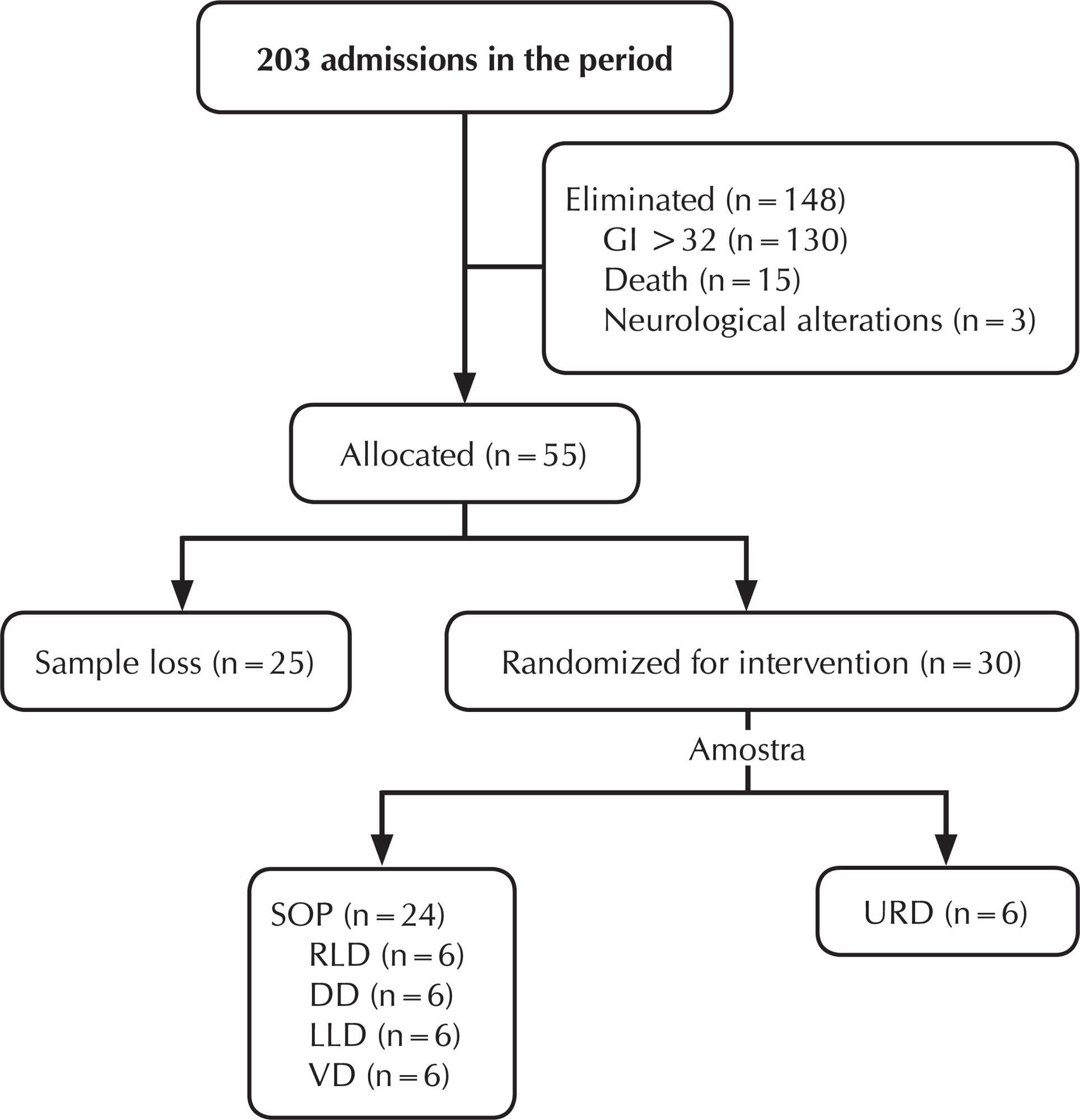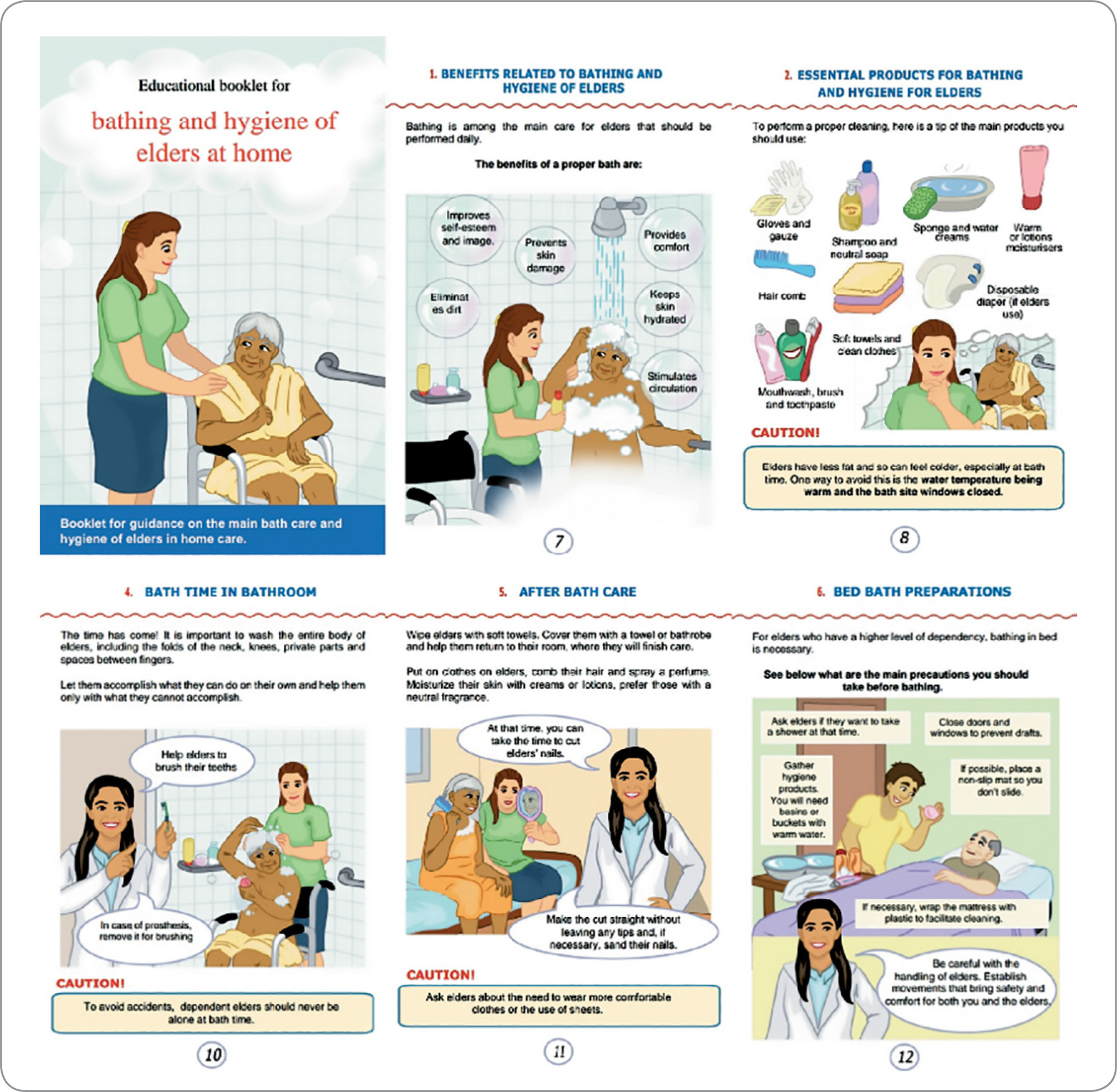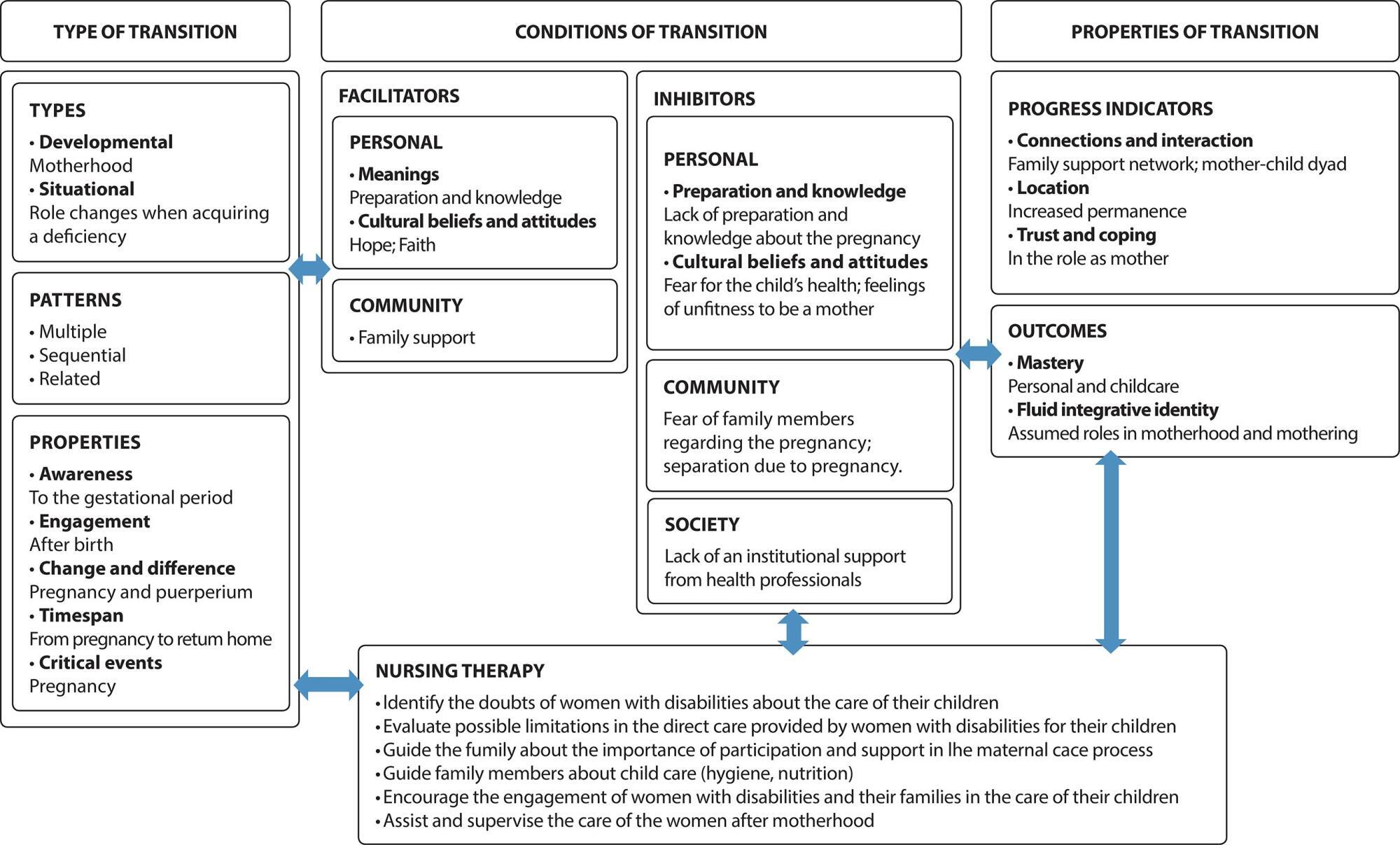-
RESEARCH01-01-2018
Being born at home is natural: care rituals for home birth
Revista Brasileira de Enfermagem. 2018;71:1247-1256
Abstract
RESEARCHBeing born at home is natural: care rituals for home birth
Revista Brasileira de Enfermagem. 2018;71:1247-1256
DOI 10.1590/0034-7167-2017-0541
Views0See moreABSTRACT
Objective:
To be aware of the care rituals developed by families when preparing for home birth during the gestational process.
Method:
Qualitative and ethnographic research developed with families during the gestational process. We adopted the observation-participation-reflection model, and the analysis was performed according to ethnonursing.
Results:
Care rituals are related to the choice of home as a place for childbirth, being characterized as a family’s rite of separation to experience this process. Other care rituals involved the preparation of the family and the eldest child as well as the home, the body, and the mind of the pregnant woman, and the choice of destination of the placenta.
Final considerations:
We must understand the birth process beyond the biological perspective, considering women and their family as a whole, within a cultural context with their beliefs and values.
-
RESEARCH01-01-2018
Violence against children and adolescents: profile and tendencies resulting from Law 13.010
Revista Brasileira de Enfermagem. 2018;71:1237-1246
Abstract
RESEARCHViolence against children and adolescents: profile and tendencies resulting from Law 13.010
Revista Brasileira de Enfermagem. 2018;71:1237-1246
DOI 10.1590/0034-7167-2017-0048
Views0See moreABSTRACT
Objective:
Describing the profile of reported violence against children and adolescents and draw an essay on the initial effects of Law 13.010 on report patterns.
Method:
Analytic study of reported cases on SINAN – Information System on Reportable Harms (from 2013 to 2015) of violence to individuals under 19, in 53 cities of Minas Gerais.
Results:
1,481 cases were reported, 49.2% before and 50.8% after Law 13.010 came to force (p = 0.5501). There was a 7% decrease on female reports and a 27.2% in male reports (p = 0.0055). It was noticed a change in report patterns (p = 0.0023), with a 130.7% increase to neglect/abandonment reports and a 33% decrease to sexual abuse report. Higher rates of violence from the parents happens at the 1 to 9-year-old age group (p < 0.0001).
Conclusion:
Main victims were women, individuals from 15 to 19 years, with aggression happening within the household; after Law 13.010, changes to patterns of victim and offender profiles and of kind of violence were noticed.
-
RESEARCH01-01-2018
Every birth is a story: process of choosing the route of delivery
Revista Brasileira de Enfermagem. 2018;71:1228-1236
Abstract
RESEARCHEvery birth is a story: process of choosing the route of delivery
Revista Brasileira de Enfermagem. 2018;71:1228-1236
DOI 10.1590/0034-7167-2016-0497
Views0See moreABSTRACT
Objective:
To analyze the discourses on the choice of the route of delivery from the perspective of women and health professionals in a public network.
Method:
The methodological approach is the discourse analysis. The data collection was through interviews and the treatment of the data was based on discourse analysis.
Results:
The categories were: 1- Between the preference and the decision there is no choice; 2- The complexity of the choice of the route of delivery; 3- It is necessary to legitimize the choice of the woman.
Final considerations:
From the perspective of women in labor the route of delivery is determined by the physician and women are not proactive. The nurses’ performance is timid, although their presence is fundamental for stimulating the physiological delivery and promoting the autonomy of women. It identifies the need for the physician to adopt a welcoming attitude, informing the women about the pros and cons involved in choosing the route of delivery.
-
RESEARCH01-01-2018
Family violence against gay and lesbian adolescents and young people: a qualitative study
Revista Brasileira de Enfermagem. 2018;71:1220-1227
Abstract
RESEARCHFamily violence against gay and lesbian adolescents and young people: a qualitative study
Revista Brasileira de Enfermagem. 2018;71:1220-1227
DOI 10.1590/0034-7167-2017-0307
Views0See moreABSTRACT
Objective:
To analyze the experiences of gay and lesbian adolescents and young people in the process of revealing sexual orientation to their families.
Method:
A qualitative study carried out in a city in the state of São Paulo. Twelve gay and lesbian adolescents and youngsters participated. For the data collection, the semi-structured interview was used and data analysis was performed using the method of interpretation of the senses.
Results:
The family reactions in the process of “coming out of the closet” of the participants were violent, with persecution and even expulsion from home, in addition to the repression of expressions of homoerotic experiences, which impacted on their health and quality of life.
Final considerations:
The family is an essential component of the support network, but also a space that can generate and reproduce forms of violence in the name of heteronormativity. Health services should develop care practices and care for the family and adolescent and homosexual youth victim of violence.
-
RESEARCH01-01-2018
Network to combat violence against rural women: articulation and communication of services
Revista Brasileira de Enfermagem. 2018;71:1212-1219
Abstract
RESEARCHNetwork to combat violence against rural women: articulation and communication of services
Revista Brasileira de Enfermagem. 2018;71:1212-1219
DOI 10.1590/0034-7167-2017-0044
Views0See moreABSTRACT
Objective:
to identify the constituent services of the network to combat violence against rural women in municipalities in the northwestern region of Rio Grande do Sul and to analyze the articulation and communication of services in search of the resolution of situations of violence.
Method:
descriptive-exploratory, qualitative study, carried out through semi-structured interviews with 26 professionals from intersectoral services, as well as managers and/or those responsible for these services. Data were systematized through content analysis.
Results:
although the professionals collectively discuss and plan coping actions, difficulties were identified in the approximation between services, related to the definition of flow, knowledge of actions/referrals, fear of seeing and reporting violence, understanding that it is not a question of demand of their field of action, and women’s access to services.
Final considerations:
it is evident the need to implement public policies that address the singularities of violence against women in rural settings.
-
RESEARCH01-01-2018
Clinical application of the Standard Operating Procedure of Positioning with Premature Infants
Revista Brasileira de Enfermagem. 2018;71:1205-1211
Abstract
RESEARCHClinical application of the Standard Operating Procedure of Positioning with Premature Infants
Revista Brasileira de Enfermagem. 2018;71:1205-1211
DOI 10.1590/0034-7167-2016-0674
Views0See moreABSTRACT
Objective:
To compare the physiological and behavioral responses of Premature Infant (PREEMIE) positioned by the Unit Routine Decubitus (URD) and the Standard Operating Procedure (SOP).
Method:
A quasi-experimental comparative study performed at a Neonatal Intensive Care Unit in Southern Brazil. We evaluated 30 PREEMIEs with gestational age ≤32 weeks, randomly assigned to Unit Routine Decubitus (URD) and Intervention Group (IG), subdivided into Right Lateral Decubitus (RLD), Dorsal Decubitus (DD), Left Lateral Decubitus (LLD) and Ventral Decubitus (VD). It was evaluated before, during and after the procedure: Heart Rate (HR); Respiratory Frequency (RF); Peripheral Oxygen Saturation (SpO2); behavior by the Neonatal Behavioral Assessment Scale (NBAS); by NIPS.
Results:
During the intervention, RR (p = 0.023), indexes in NBAS (p = 0.01) and NIPS (p <0.0001) reduced significantly in SOP. HR and SpO2 did not present a significant difference.
Conclusion:
Positioning according to the SOP shows benefit in relation to the behavioral and physiological status of PREEMIE.

-
01-01-2018
Contributions of nursing care to women
Revista Brasileira de Enfermagem. 2018;71:1203-1204
Abstract
Contributions of nursing care to women
Revista Brasileira de Enfermagem. 2018;71:1203-1204
DOI 10.1590/0034-7167-201871sup301
Views0The situation of women and, particularly, the problems concerning their lives deserve special care by health professionals, society and mass media, in order to change their situation and boost improvements due to the condition where women were inserted decades ago and nowadays.The pregnancy-postpartum circle may be the most dramatic and exciting experience in the life […]See more -
01-01-2018
Contribuições do cuidado em enfermagem à mulher
Revista Brasileira de Enfermagem. 2018;71:1203-1204
Abstract
Contribuições do cuidado em enfermagem à mulher
Revista Brasileira de Enfermagem. 2018;71:1203-1204
DOI 10.1590/0034-7167-201871sup301
Views0A situação da mulher e, particularmente, os problemas que dizem respeito à sua vida vêm merecendo destacada atenção por parte dos profissionais de saúde, da sociedade e dos meios de comunicação, sendo focalizada por eles a necessidade de acelerar mudanças na condição que ela ocupou por décadas e ainda hoje ocupa.O ciclo gravídico-puerperal talvez seja […]See more
-
ORIGINAL ARTICLE08-10-2020
Burden on caregivers of patients with sequelae of cerebrovascular accident
Revista Brasileira de Enfermagem. 2020;73(6):e20180868
Abstract
ORIGINAL ARTICLEBurden on caregivers of patients with sequelae of cerebrovascular accident
Revista Brasileira de Enfermagem. 2020;73(6):e20180868
DOI 10.1590/0034-7167-2018-0868
Views0See moreABSTRACT
Objectives:
to evaluate the burden and its relationship with the sociodemographic characteristics of caregivers of people with sequelae of stroke.
Methods:
a cross-sectional, exploratory, and quantitative study was conducted with 151 caregivers of people with sequelae of stroke, through home interviews between September and December 2017. Results: there was a general mean of low burden. The items that indicated the worst changes were: “My time for social activities with friends,” “My time for family activities,” “My ability to cope with stress,” and “My physical functioning.” There was an association of burden with the female sex and with caregivers who have been assisting for longer.
Conclusions:
the results allow us to reflect on the need to create a policy aimed at family caregivers to reduce the impact of care delivery.
-
07-05-2021
Educational technology for bathing/hygiene of elders at home: contributions to career knowledge
Revista Brasileira de Enfermagem. 2021;74:e20200890
Abstract
Educational technology for bathing/hygiene of elders at home: contributions to career knowledge
Revista Brasileira de Enfermagem. 2021;74:e20200890
DOI 10.1590/0034-7167-2020-0890
Views0See moreABSTRACT
Objective:
to build and validate an educational booklet for bathing and hygiene of elders at home.
Methods:
a methodological study, developed through data collection in literature and situational diagnosis, booklet construction, material qualification through validation by expert judges (11 nurses) and target audience (30 caregivers). Data were analyzed descriptively. The minimum content validity index of 0.80 was considered.
Results:
in content and appearance validation, experts assigned Content Validity Index global of 0.92, while for assessment of the material’s suitability, the booklet was classified as “superior”, with an average of 90%. In the validation of caregivers, the overall Content Validity Index was 1.0.
Conclusion:
the booklet was successfully validated and can be considered in the context of health education and collaborate with an adequate and safe practice of bathing and hygiene of elders at home.

-
ORIGINAL ARTICLE07-06-2020
Vulnerability in the health of young transgender women living with HIV/AIDS
Revista Brasileira de Enfermagem. 2020;73(5):e20190046
Abstract
ORIGINAL ARTICLEVulnerability in the health of young transgender women living with HIV/AIDS
Revista Brasileira de Enfermagem. 2020;73(5):e20190046
DOI 10.1590/0034-7167-2019-0046
Views0See moreABSTRACT
Objectives:
to analyze the health vulnerability of young female transgender living with HIV/AIDS.
Methods:
qualitative, descriptive, and exploratory study, based on the theoretical reference of Social Representation and concept of vulnerability; developed with six transgender women in a reference Hospital for HIV/AIDS. We analyzed the individual interviews, recorded, and transcribed in full, in the IRaMuTeQ software by Similitude Analysis.
Results:
the thematic categories are listed based on the Ayres reference: 1) Individual dimension of vulnerability to HIV/AIDS; 2) Social dimension of vulnerability to HIV/AIDS; 3) Programmatic dimension of the vulnerability.
Final Considerations:
the young female transsexual living with HIV/AIDS experience a context of vulnerability in health associated with a lack of knowledge and difficulties for the realization of self-care. The study evidenced the representations of social abjection and unpreparedness of the health team that compose the Primary Attention in Health in promoting qualified assistance for the execution of the effective and humanized care.
-
ORIGINAL ARTICLE12-05-2019
Self-care activities, sociodemographic variables, treatment and depressive symptoms among older adults with Diabetes Mellitus
Revista Brasileira de Enfermagem. 2019;72:22-29
Abstract
ORIGINAL ARTICLESelf-care activities, sociodemographic variables, treatment and depressive symptoms among older adults with Diabetes Mellitus
Revista Brasileira de Enfermagem. 2019;72:22-29
DOI 10.1590/0034-7167-2017-0579
Views0See moreABSTRACT
Objective:
to analyze the association between self-care activities of older adults with Type 2 Diabetes Mellitus (DM) and sociodemographic variables, type of treatment and depressive symptoms.
Method:
inferential and cross-sectional study, with 121 older adults with Type 2 DM in ambulatory care. We used a questionnaire for characterization of sociodemographic and health, questionnaire self-care activities with DM, Mini Mental State Examination and Geriatric Depression Scale. The association of variables was used (Fisher’s exact test) and for comparing the means (Student’s t-test and analysis of variance).
Results:
The mean age was 68.1 years, the majority were women (57.2%), retired (71.9%) and married (65.3%). The highest averages were for the activities: “to dry the spaces between the toes, after washing them” and smaller averages for “exercise”.
Conclusion:
In spite of high average for self-care activities, there is a need for enhanced performance and compliance to them.
-
12-04-2023
Nursing and the Sustainable Development Goals (SDGs): An Essential Commitment
Revista Brasileira de Enfermagem. 2023;76(6):e760601
Abstract
Nursing and the Sustainable Development Goals (SDGs): An Essential Commitment
Revista Brasileira de Enfermagem. 2023;76(6):e760601
DOI 10.1590/0034-7167.2023760601
Views0The Sustainable Development Goals (SDGs) are a global initiative launched by the United Nations (UN) in September 2015 as part of the 2030 Agenda for Sustainable Development, whose objectives summarize a universal call to action to end poverty, protect the environment and ensure that all people have access to opportunities and well-being, all in an […]See more -
ORIGINAL ARTICLE08-19-2019
Nursing practice in home care: the mediation of care by reflexivity
Revista Brasileira de Enfermagem. 2019;72(4):956-963
Abstract
ORIGINAL ARTICLENursing practice in home care: the mediation of care by reflexivity
Revista Brasileira de Enfermagem. 2019;72(4):956-963
DOI 10.1590/0034-7167-2018-0431
Views0See moreABSTRACT
Objective:
To analyze the practice of nurses in home care, considering the mediation of care by reflexivity.
Method:
Unique, qualitative case study, anchored in the dialectical framework. The participants were 13 nurses who work in home care in Minas Gerais. Data were obtained by participant observation and interview, and submitted to critical discourse analysis.
Results:
Nursing care at home involves the repetitions of everyday actions and a degree of unpredictability. Reflexivity, according to Schön’s theoretical framework, emerges as a component of professional practice that leads to the practice of care as a continuous assessment of work, and also to reflection on the challenges imposed by conflicting situations. Reflexivity also stems from professionals’ search for improvements in their practices.
Final considerations:
We identified the presence of actions and knowledge mobilized by the reflexivity of the nurse in the home care setting. The following were the elements of this reflexive practice: knowing-in-action, reflection-in-action and reflection reflection-in-action.
-
ORIGINAL ARTICLE10-01-2022
Self-care of elderly people with diabetes mellitus and the nurse-patient interpersonal relationship
Revista Brasileira de Enfermagem. 2022;75(1):e20201257
Abstract
ORIGINAL ARTICLESelf-care of elderly people with diabetes mellitus and the nurse-patient interpersonal relationship
Revista Brasileira de Enfermagem. 2022;75(1):e20201257
DOI 10.1590/0034-7167-2020-1257
Views1INTRODUCTIONChronic non-communicable diseases are the main causes of death and health problems in the world, causing about 41 million deaths each year, which corresponds to approximately 71% of all deaths. Among these diseases, diabetes mellitus has stood out due to the increase in its incidence and prevalence().Estimates indicate that 463 million people live with diabetes […]See more -
ORIGINAL ARTICLE12-13-2019
Transition to motherhood and mothering for women in wheelchairs: a nursing perspective
Revista Brasileira de Enfermagem. 2019;72:290-296
Abstract
ORIGINAL ARTICLETransition to motherhood and mothering for women in wheelchairs: a nursing perspective
Revista Brasileira de Enfermagem. 2019;72:290-296
DOI 10.1590/0034-7167-2018-0843
Views1See moreABSTRACT
Objective:
To discuss the process of transition to motherhood and mothering of women who are wheelchair users, from the perspective of Afaf Ibrahim Meleis.
Method:
Qualitative, descriptive, exploratory study conducted with six women in the state of Rio de Janeiro. The Life Narrative method was used, with thematic analysis in the light of Transitions Theory.
Results:
Developmental and situational transitions occurred and were influenced by personal, community and social factor. Moved mainly by ignorance and prejudice of family members and of the social network, these factors were not barriers for motherhood and mothering.
Final Considerations:
The reproductive rights of women with disabilities must be respected and, for this, inclusive policies focused on women with disabilities should be adopted.

Search
Search in:
Nuvem de Tags
Adolescente (85) Atenção Primária à Saúde (239) COVID-19 (91) Criança (91) Cuidados de Enfermagem (269) Educação em Enfermagem (151) Educação em Saúde (139) Enfermagem (930) Enfermagem Pediátrica (86) Estudantes de Enfermagem (77) Estudos de Validação (131) Família (87) Idoso (208) Promoção da Saúde (99) Qualidade de Vida (104) Saúde do Trabalhador (86) Saúde Mental (145) Saúde Pública (82) Segurança do Paciente (150) Tecnologia Educacional (100)



